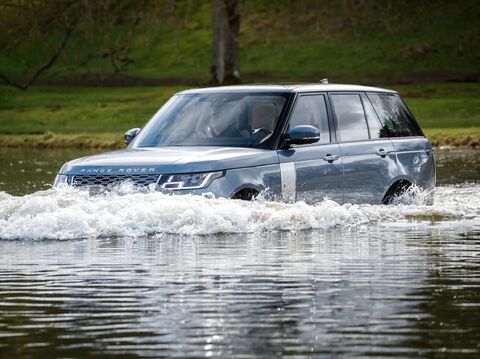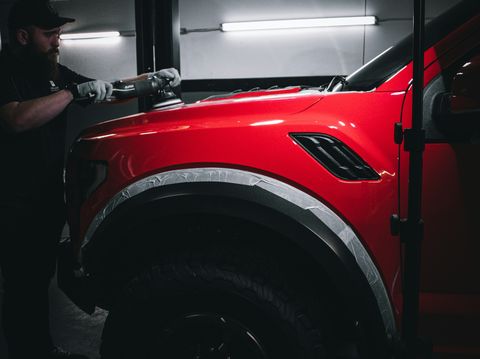Driving through floodwaters

Owners of 4x4s may be tempted to simply plough on through flooded roads, but you must be careful. Here are several factors you need to be aware of.
Depth
Never drive straight into flood water without first determining the depth. It takes only 15 cm of water to reach the bottom side of most ordinary passenger cars. Do not charge into the water at full-speed, it will feel like you’ve hit a wall and can lead to loss of control. It could also lead to water blasting through the engine bay, into places it should not go, resulting in an engine stall.
It is vital to know how little flowing water is needed to start shifting even a huge luxury 4x4. As little as 30 cm could be enough to lift and carry your vehicle off course.
You should also know your vehicles maximum wading depth. Check in the owner’s manual. Thanks to higher ground clearance and relocated air intakes, for some vehicles the wading depth could be as high as 900mm, but that figure would be standing water, not fast-flowing.
If it looks too deep, or too fast-moving, turn around and find another route. If you observe another vehicle proceeding through the waters, this can be a reasonable gauge of the depth.
Some modern Land Rover and Range Rover models have depth measuring sensors for such a situation.
Be aware of hidden obstacles
Mud and debris make flood water murky, hampering visibility. You cannot see the obstacles that lurk beneath the surface. The road may have broken up, manholes can lift out of position, as can drain covers. Hitting one of these hazards while driving could damage your tyres, crack your wheel or even cause you to become stranded.
If you absolutely must drive a stretch of road underwater, for example, in an emergency, go as fast as necessary, as slow as possible. Sticking towards the middle of the road may help you, as the road’s camber means this part should be the least deep section.
Remember property owners
For some, flooding causes serious stress, disruption to their routines and carries huge financial implications. If a property or business owner has taken the time to install flood barriers over doors, the waves generated by a vehicle wading through the water can be enough to send water cascading over these defences. Be respectful and if you see homeowners with these countermeasures in place, consider going a different way -or at least see if you can be of any assistance.
A technique for fording water
With all the above considerations taken into account, this is how you should ford water, according to Land Rover’s off-roading guide.
Wait until traffic in front has cleared the water obstacle. Proceed slowly at first. The goal is to intentionally create what is known as a bow wave. This wave peaks around the front of the bonnet, creating a useful depression behind it that lowers the water level near to the door jambs.
Land Rover suggests to start steadily and gather forward motion in a controlled manner.
Aftercare
Once you have successfully forded the water, your job isn't done yet. It's crucial to check your vehicle for any damages or issues that might have been caused by the water. If the water was deep, check your brakes as soon as it's safe to do so because they might be wet and not working as efficiently. Drive slowly and apply the brakes to dry them out.
Check the Engine and Other Essential Parts
It's also vital to check your engine and other essential parts for water ingress. Even a small amount of water in the engine, transmission or differentials can lead to significant damage. Be sure to check your oil dipstick for water contamination — if the oil is milky rather than clear, it may indicate water contamination.
Maintain Your Vehicle
If you live in an area prone to flooding or if you frequently drive off-road, it's a good idea to have your vehicle inspected and serviced regularly by a professional mechanic. They can check for signs of water damage and ensure that all components are functioning properly.
Know Your Limits
While many 4x4s are capable of fording water to some degree, it's important to understand the limits of your specific vehicle. Some 4x4s are better equipped for water fording than others, and this should be taken into account when deciding whether or not to proceed through a water obstacle. Always remember that safety is paramount.
While 4x4s may have an advantage in flooded situations due to their elevated ride height and rugged construction, it's crucial to remember that they're not invincible. Fording water should always be done with caution and preparation. Avoid flooded roads whenever possible, and never underestimate the power of water. Respect the environment and the potential hazards that come with it to ensure a safe journey.
Header image: https://media.landrover.com/image-packs/2019-range-rover




